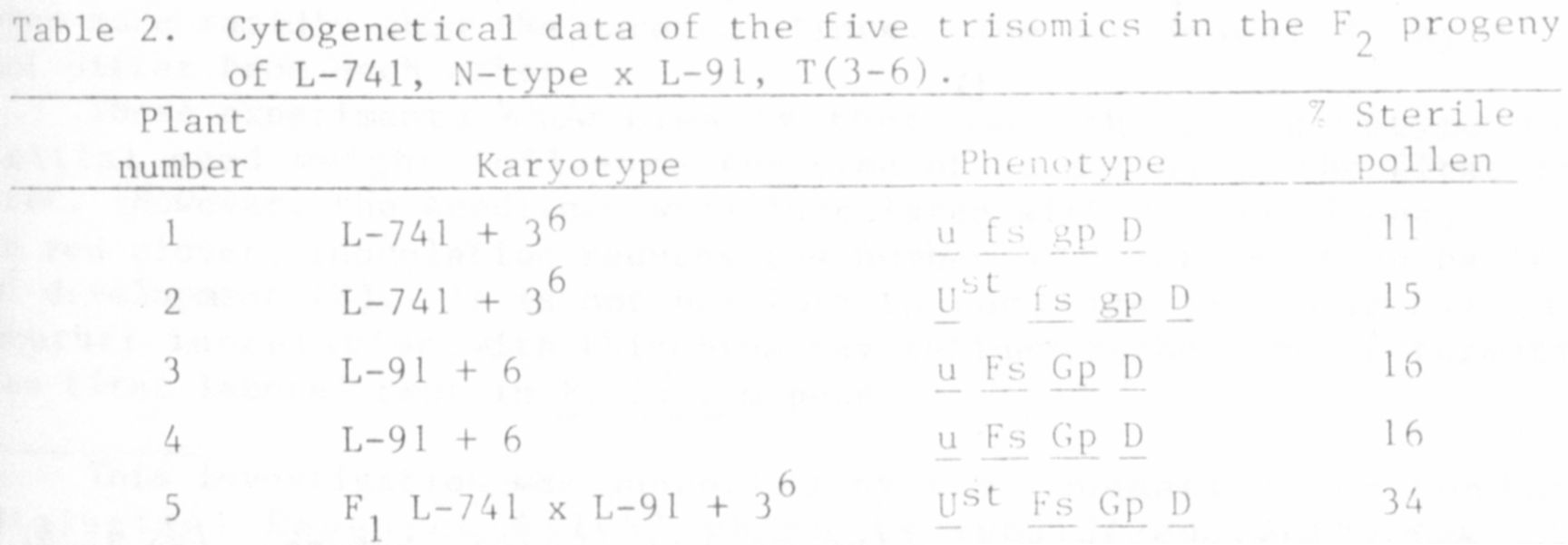34 PNL Volume 18 1986 RESEARCH REPORTS
A NEW INTERPRETATION OF HAMMARLUND'S K-LINE
Lamm, R.
The Swedish University of Agricultural Sciences!
Alnarp, Swede!
In earlier letters to the PNL (2,3), I have assumed that Ló84, the K-
line of Hammarlund, is characterized by a T(l-5) interchange. Later,
however, karyotypic studies of this line (cf. Fig. 1 B) have made me suspi-
cious of this interpretation. Moreover, Folkeson, working with BSG
staining (1), has suggested that chromosome 3 rather than 5 may be involved
In the interchange.
For elucidating this question further, I grew L-91, a gray dwarf N-
type derived from the cross L-84 x L-2 . The structure of L-91 was
identical to that of L-84. Thus the F1 hybrid was perfectly fertile.
Measurements of the interchange chromosomes were made on ten mitotic root
tip plates from each of these lines. An analysis of variance shows that
the results, given below, could be pooled.

Next, I studied the karyotype of the F1 hybrid between L-741, N-type
(Fig. 1A), and L-91. The hybrid turned out to be a T(3-6) interchange
heterozygote (Fig. 1C) and consequently L-84 and L-91 were of similar
structural type. Measurements on microphotos of twenty root tip metaphases
from this semisterile F1 hybrid gave the following results:

The total length of chromosomes 3+6 was 8.2-0.01 and that of 36
+ 63 8.1-0.01 .
In an F2 progeny of this cross in addition to 147 diploid plants-
five trisomies were obtained. Table 1 gives the results from the F2
analysis of the 2n plants. The Fs:fS segregation has been omitted since
the scoring on this point unfortunately was unreliable. In Table 2 the
cytogenetical characters of the trisomies are recorded. Selfed seed har-
vested on these plants was used to score for Fs.


